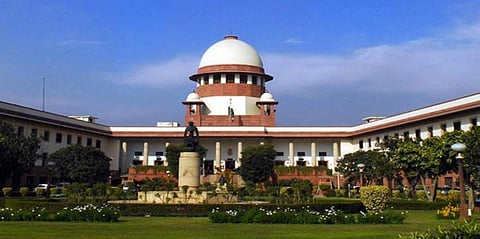

New Delhi, Nov 18 (PTI) In a significant verdict, the Supreme Court Thursday said that a hyper-technical approach be avoided in determining the juvenility claim of an accused in criminal cases, and if two views are possible, then courts should lean in favour of holding the accused to be a minor in borderline cases.
The top court's verdict came while dismissing an appeal of one Rishipal Solanki, son of the victim, challenging the Allahabad High Court verdict that had upheld the findings of the courts below that the one of the accused was a minor at the time of the commission of the offence.
A bench comprising justices D.Y. Chandrachud and B.V. Nagarathna examined in detail the catena of judgements on ascertaining the juvenilty claim of the accused in a criminal case and summarised the findings.
This court observed that while considering the question as to the determination of the age of an accused for the purpose of ascertaining whether he is a juvenile or not, a hyper-technical approach should not be adopted while appreciating the evidence adduced in support of the plea that he was a juvenile and, if two views may be possible, the Court should lean in favour of holding the accused to be a juvenile in borderline cases, the 60-page judgement said.
Writing the verdict for the bench, Justice Nagarathna said that the Juvenile Justice (Care and Protection of Children) Act is a welfare legislation and the courts should be zealous to see that a juvenile derives full benefits of the provisions of the Act but at the same time it is also imperative for the Courts to ensure that the protection and privileges under the Act are not misused by unscrupulous persons to escape punishment for having committed serious offences.
The verdict referred to a provision of the statute on juveniles and said that it raises a presumption regarding juvenility of the child in conflict with the law brought before the Juvenile Justice Board or the Committee.
But in case the Board or Committee has reasonable grounds for doubt about the person brought before it is a child or not, it can undertake the process of determination of age by seeking evidence and thus, in the initial stage a presumption that the child brought before the Committee or the JJ Board is a juvenile has to be drawn by the said authorities, it said.
The top court referred to the process of age determination and said that evidence can be in the form of date of birth certificate from the school or the matriculation certificate from the concerned board, if available or in the absence thereof the birth certificate given by a corporation or by a municipal authority or a panchayat and in the absence of the above, the age has to be determined by an ossification test or any other medical age determination test conducted on the orders of the committee or the board."
The verdict said that a claim of juvenility may be raised at any stage of a criminal proceeding, even after the final disposal of the case.
A delay in raising the claim of juvenility cannot be a ground for rejection of such claim. It can also be raised for the first time before this Court. An application claiming juvenility could be made either before the Court or the JJ Board, it said while referring to judgements on the issue.
When an application claiming juvenility is made, then the provisions under Section 94 of the JJ Act would apply and if the JJ Board has reasonable grounds for doubt regarding the minority claim, then the Board shall undertake the process of age determination by seeking evidence.
The judgement said when a claim for juvenility is raised, the burden is on the person raising the claim to satisfy the court to discharge the initial burden.
That it is neither feasible nor desirable to lay down an abstract formula to determine the age of a person. It has to be on the basis of the material on record and appreciation of evidence adduced by the parties in each case, it said.
When the determination of age is on the basis of evidence such as school records, it is necessary that the same would have to be considered as per Section 35 of the Indian Evidence Act, inasmuch as any public or official document maintained in the discharge of official duty would have greater credibility than private documents, it said.
Any document which is in consonance with public documents, such as a matriculation certificate, could be accepted by the court or the JJ Board provided such a public document is credible and authentic as per the provisions of the Indian Evidence Act, it said.
Ossification Test cannot be the sole criterion for age determination and a mechanical view regarding the age of a person cannot be adopted solely on the basis of medical opinion by radiological examination. Such evidence is not conclusive evidence but only a very useful guiding factor to be considered in the absence of documents mentioned in the JJ Act, it said.
The top court rejected the plea challenging the verdicts of courts below which had held the accused to be a juvenile.
It was alleged that the signature of the accused when he was a four-year-child, was almost identical in school records with another signature of his when he was 12 years of age.
But the fact remains that in 2019, when the accused completed his class 10, his date of birth has been shown as September 25, 2004, in the matriculation certificate. Hence, respondent no.2 was only about 15 years of age on the date of the incident, and in any case, he was less than 16 years of age, it said.